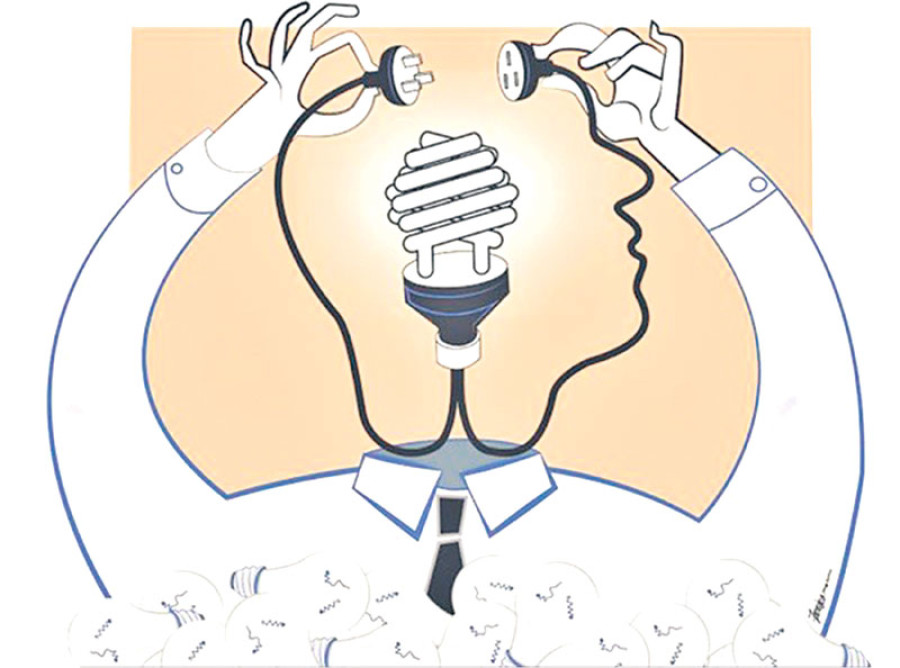Opinion
Pancheshwar daydream
India has dragged its feet on the Mahakali-based multi-purpose project with a strong hydropower component
Ramesh Khatry
As the Indian blockade was still continuing till the 26th of January, the celebration of the 67th Republic Day of India hardly caused a stir in our country. However, a piece of negative news caught people’s attention: India has dragged its feet on the Mahakali based multi-purpose project with a strong hydropower component, which the Indian Prime Minister Narendra Modi had promised to start within a year during his visit to Nepal in August 2014.
Modi is upset that Nepal’s constitution did not bow down to India’s wishes. Modi wanted Nepal to revert to being a Hindu state. This did not happen. So he is delaying the Pancheshwar project. India has not sent its four representatives to the Pancheshwar Development Authority although Nepal did so nine months ago. After two meetings of the governing body, the secretary of India’s Water Resource Ministry Shashi Shekhar has been too busy to come to the third. Now, Nepal expects Wapcos India Limited to complete the Detailed Project Report within March. But we cannot believe their words until it actually happens.
Gloomy History
Ramesh Nath Pandey in his book Kutniti ra Raajniti explains that Girija Prasad Koirala’s stubbornness had doomed the hydroelectric project right from the beginning. Koirala, during visit to India in 1992, had signed the Tanakpur “treaty” that envisions the Pancheswar project. But his delegation of 72 people did not even include an expert in water resources, and Koirala evidently signed the treaty under Indian pressure. Koirala called the treaty merely an “agreement”, and refused to bring it to Parliament for ratification. Even the demands of the opposition CPN-UML, the Supreme Court, his relative Matrika Koirala, and the Nepali Congress leaders like Ganesh Man Singh could not change Koirala’s stubborn mind.
The former Indian ambassador to Nepal Krishna V. Rajan in the book, The Ambassadors’ Club, claims that a new plan, the Pancheshwar Multipurpose Project, during the time of the UML PM Manmohan Adhikari came to the rescue. “Each country would construct a 6,000 MW power station on its bank…The best part of this grand and ambitious venture would be that the Tanakpur project, which had caused so much irritation and misunderstanding between the two countries, would get subsumed in Pancheshwar.” Governments in both India and Nepal changed rapidly after that. Nationalism on both sides took its toll. A junior member of the Indian delegation has been quoted in Rajan’s book saying “I do not care if our PM has signed…I’ll see how our water can be given to Nepal.” The Nepali side retorted, “Water is the only thing we’ve got…we can’t give it to India at any price!” From 1996, India gave sanctuary to Maoist leaders; yet it cited the rebellion as a hindrance to the project. The hijacking of the IC 814 Indian airplane from the Kathmandu airport in 1999 also doomed Pancheshwar.
No client state
India has always wanted Nepal to become its poodle, and the latter has always resisted that. Unlike India, Nepal never became a part of the British Raj. Some argue that after the Sugauli Treaty of 1816, Nepal has never remained a fully independent state. Our country’s unique geography has played against us in the past as it does now. The British India surrounded Nepal on three sides then; the republic India does the same now. Still the British sent ambassadors to Kathmandu, and invited different Rana prime ministers to visit Britain. These gestures indicated that Britain regarded Nepal as an independent state.
Problems between India and its neighbours Sri Lanka, Maldives, Bangladesh, Pakistan and Nepal arise when India wants to treat them as client states like Bhutan. India has developed Bhutan’s hydroelectric potential at a rapid pace because Bhutan has surrendered parts of its sovereignty to India; and the latter needs power for its industries. Bhutan cannot develop independent ties with other countries without India’s permission, and relies totally on India for its security. Nepali authors argue that India prefers the outdated 1950 treaty with Nepal because the insecure Rana PM Mohan Shamsher agreed to India’s control of Nepal’s foreign affairs and defence needs. Rightly, King Mahendra drove out the Indian military that his father Tribhuvan had allowed in.
Nepal has suffered Indian blockades whenever it developed closer relations with China. About two years ago, Bhutan endured a similar Indian fuel embargo when it made the mistake of dealing with its northern neighbour. By halting subsidised gasoline and kerosene, India made sure a Bhutanese political party that would rubber-stamp its decisions came to power.
With a population of only 700,000, Bhutan has enough electricity for its needs, so it can export the surplus to India, the builder of its hydroelectric plants. Sikkim has produced enough power by harnessing the Tista River through Indian aid, but at the cost of losing its independence to India in 1975. Till now, Sikkim does not have its own airport. Becoming an Indian state, therefore, does not automatically bring a blessing.
Our own Pancheshwar
The recent Indian blockade has altered Nepal’s relations with India forever. Now, Nepal will remain cautious of whatever sweet assurances India
gives. The Pancheshwar project may forever remain a daydream. If so, Nepal should seek another partner, and avoid the corruption and bureaucratic red tape that made an investor like the Norwegian Statkraft pull out of the?Tamakoshi hydropower project.
However, we have an even better way—PM Oli’s positive challenge of each house producing at least 500 watts of solar power. My wife and I took our revenge on Modi when we installed solar panels for cooking and said goodbye to gas from India. We can have our own Pancheshwar (24 hours of electricity) if we make it a priority. For us, it was a choice between a new motorcycle and a solar powered kitchen. Our Pancheshwar won!
Khatry is the executive director of Association for Theological Education in Nepal




 16.12°C Kathmandu
16.12°C Kathmandu











